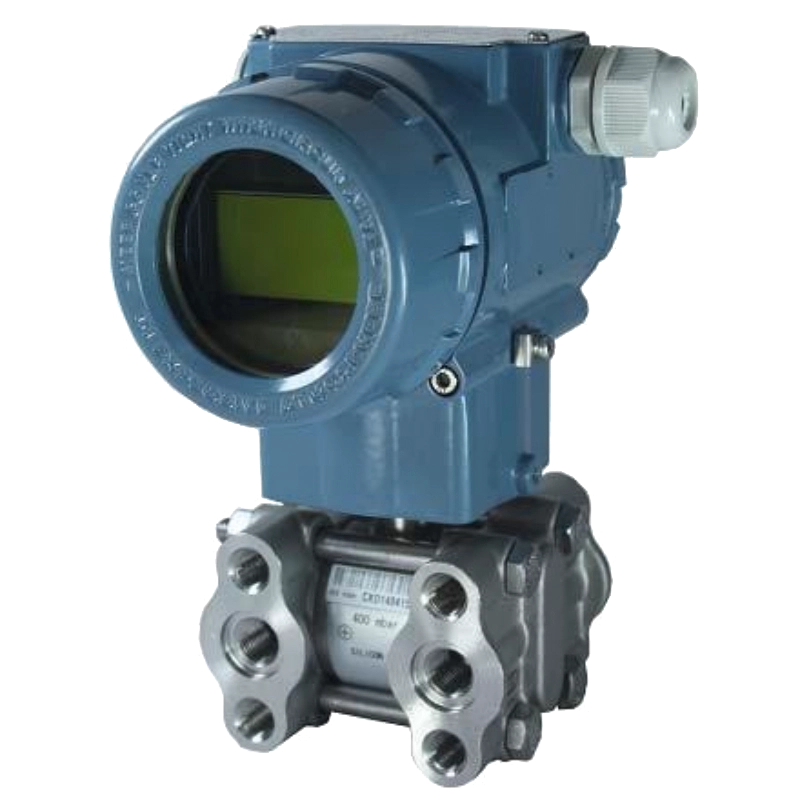Como funciona um sensor de pressão diferencial?
Data de lançamento: 2025-06-20
Um sensor de pressão diferencial é um dispositivo usado para medir a diferença de pressão entre dois pontos. É amplamente utilizado em indústrias como a industrial, HVAC (aquecimento, ventilação e ar condicionado), aeroespacial e monitoramento de fluxo de líquidos. Ao medir com precisão a diferença de pressão, dispositivos sensores de pressão diferencial pode fornecer informações de dados importantes para ajudar o sistema a manter uma operação estável, evitar falhas e melhorar a eficiência do trabalho.
Princípio de funcionamento do sensor de pressão diferencial
O princípio básico de funcionamento de um sensor de pressão diferencial é usar o elemento sensor dentro do sensor para detectar e registrar a diferença de pressão entre dois pontos de medição. O sensor é conectado a pontos diferentes por meio de duas entradas, uma medindo a pressão mais alta e a outra medindo a pressão mais baixa. De acordo com a variação da diferença de pressão, o sensor gera um sinal elétrico correspondente.
Especificamente, um sensor de pressão diferencial geralmente consiste em duas partes principais: um elemento sensor e um módulo de circuito. O elemento sensor é geralmente composto de silício piezoresistivo, piezoelétrico ou capacitivo. Esses elementos respondem às mudanças de pressão e as convertem em sinais elétricos por meio de efeitos físicos (como efeito piezoresistivo ou efeito capacitivo). O módulo de circuito é responsável por receber esse sinal elétrico e emiti-lo na forma de sinais analógicos ou digitais, que são finalmente convertidos em valores numéricos que podem ser processados e analisados.
Aplicação de sensores de pressão diferencial
A faixa de aplicação dos sensores de pressão diferencial é muito ampla, envolvendo quase todos os campos que precisam monitorar o fluxo de fluidos, a pressão do gás ou a integridade do sistema.
Automação industrial: Em muitas aplicações industriais, sensores de pressão diferencial são usados para monitorar a diferença de pressão na tubulação. Por exemplo, em sistemas de filtros e bombas, a diferença de pressão pode refletir o estado de funcionamento do equipamento. Se o filtro estiver bloqueado ou a bomba estiver operando com menor eficiência, a diferença de pressão mudará, o que fornece informações importantes de alerta precoce para a manutenção do equipamento.
Sistema de aquecimento, ventilação e ar condicionado (HVAC): A aplicação de sensores de pressão diferencial em sistemas HVAC também é muito comum. Por exemplo, em sistemas de tratamento de ar, sensores de pressão diferencial pode monitorar as mudanças de pressão dos filtros de ar para garantir a eficiência da operação do sistema e lembrar a equipe de manutenção de substituir os filtros.
Equipamentos médicos: A aplicação de sensores de pressão diferencial na área médica não pode ser ignorada. Em ventiladores, equipamentos de monitoramento de oxigênio no sangue e outros instrumentos médicos, sensores de pressão diferencial podem ser usados para monitorar o fluxo de gás e as variações de pressão, garantindo a precisão do equipamento e a segurança do paciente.
Aeroespacial: No sistema de controle de voo de uma aeronave, sensores de pressão diferencial são usados para medir a diferença de pressão entre a cabine e o ambiente externo. Isso ajuda a fornecer dados precisos de altitude, garantindo a segurança e a estabilidade do voo.
Sistema de tratamento de água: Em sistemas de tratamento de água e controle de fluxo de líquidos, sensores de pressão diferencial são usados para monitorar variações de pressão em filtros e tubulações. Ao detectar a diferença de pressão em tempo real, o sistema pode detectar potenciais problemas e realizar a manutenção em tempo hábil.
Vantagens dos sensores de pressão diferencial
Alta precisão: sensores de pressão diferencial podem fornecer dados precisos de diferença de pressão, o que é especialmente importante para equipamentos industriais que exigem controle de precisão.
Tempo real: sensores de pressão diferencial podem detectar alterações de pressão em tempo real e enviar sinais de alarme a tempo quando ocorrem anormalidades, o que ajuda a detectar possíveis falhas ou perigos com antecedência.
Confiabilidade: Os sensores modernos de pressão diferencial usam materiais de alta qualidade e tecnologias avançadas, têm alta capacidade antiparasitária e durabilidade e podem operar de forma estável e constante em ambientes adversos por um longo tempo.
Flexibilidade: O design dos sensores de pressão diferencial é altamente adaptável e pode fornecer diferentes faixas de medição e tipos de saída de acordo com diferentes requisitos de aplicação.
Resumo
Como uma importante ferramenta de medição, os sensores de pressão diferencial podem desempenhar um papel vital em muitas aplicações industriais e técnicas importantes. Seja na otimização de processos de produção, na melhoria da eficiência operacional de equipamentos ou na garantia da segurança do sistema e da gestão da manutenção, sensores de pressão diferencial de alta precisão fornecem grande ajuda. Os cenários de desempenho e aplicação dos sensores de pressão diferencial também estão em constante expansão e desempenharão um papel cada vez mais importante em futuros sistemas inteligentes e automatizados.


 />
/> />
/>